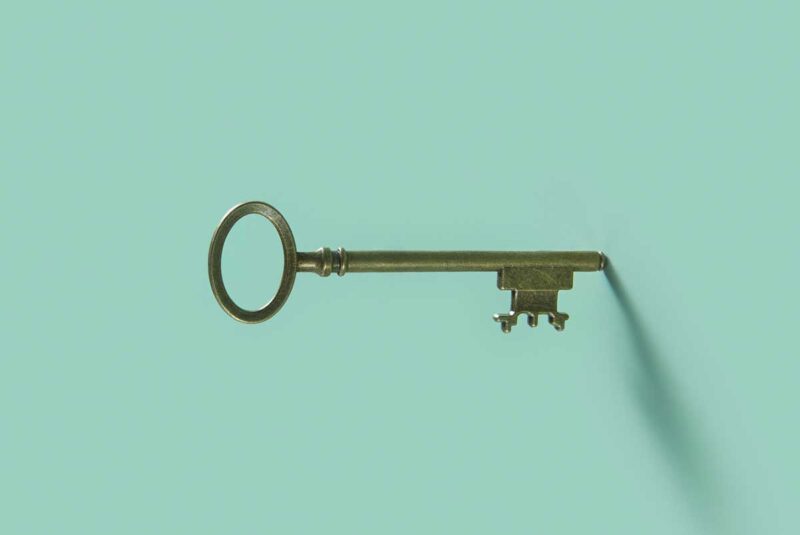Ready To Buy a Home?
Get Approved to Buy a Home
Rocket Mortgage® lets you get to house hunting sooner.
If you’re shopping for a home loan, you’re likely familiar with the concept of mortgage rates. You probably also know that even a small difference in that number can change the amount you pay in interest over the life of a loan by tens of thousands of dollars.
But you may not have heard of the par rate. The par rate is important because it’s the opening interest rate a lender offers on a mortgage loan – though it may not be the mortgage interest rate you end up paying.
Read on to learn what a mortgage par rate is, how it’s determined and how you can use it to get a better rate.
What Is a Mortgage Par Rate?
The par rate is the initial interest rate a lender offers a borrower, but it’s not necessarily the interest rate you’ll pay on your mortgage. Instead, it’s usually based on market conditions and the borrower’s credit score. The par rate may be adjustable or fixed, and it’s typically the first interest rate you’re eligible for after applying for a home loan.
The par rate isn’t necessarily the best mortgage interest rate you can get, but it’s a good baseline. Once you know your par rate, you can negotiate and explore different options with the lender.
What Can You Do When You Know Your Par Rate?
The par rate is also a helpful way to compare rates between different loan products and services. For instance, if one lender offers you a par rate of 6.5% for a 30-year fixed-rate mortgage and another offers a par rate of 6.75% for a loan with the same terms and conditions, you may want to ask the second lender why their rate is different from the first lender’s.
This provides the information you need to learn why one lender might offer a different rate and what steps you can take to lower your par rate or negotiate a better offer.
If your par rate is higher than you expected or higher than the rate other lenders are offering you, you may want to consider negotiating with a lender for a more favorable rate.
How Do Lenders Determine Your Par Rate?
Your final mortgage interest rate will be influenced by your par rate. It may be higher or lower pending your lender’s review of your finances and credit profile. They’ll look at several factors to determine a par rate, including your:
- Credit score and history
- Income
- Employment history
- Loan type
- Down payment amount
How Do Mortgage Lenders Use Par Rates?
Lenders often use the par rate as a way to offer deals and discounts to borrowers. When they make an initial offer to a borrower, they present the par rate. If the lender is especially interested in earning a borrower’s business, they may offer a lower par rate.
Also, lenders can make adjustments to the par rate if a borrower meets certain conditions, like making a larger down payment or settling outstanding debts to improve their debt-to-income (DTI) ratio.
Lenders also use the par rate to calculate the starting interest rate on both fixed-rate and adjustable-rate mortgages (ARMs). The starting/par interest rate on an ARM is based on an index rate, plus or minus a margin determined by the lender.
How To Adjust Your Par Rate To Your Advantage
Once you know your par rate, you may want to look for ways to either lower it or see if you can benefit from raising it. After all, the lower your mortgage interest rate, the less you’ll pay in interest over time. However, there may be advantages to paying more in interest.
Discount points
One approach to adjusting your par rate is to buy discount points. Discount points are a one-time fee paid at closing in exchange for a lower interest rate.
One discount point equals 1% of the loan amount and will generally reduce your interest rate by 0.25%. For instance, if you’re offered a par rate of 5.25% on a $200,000 loan, you can buy 1 point for $2,000 (1% of the loan amount), which would lower your rate by 0.25%, putting your final rate at a round 5.00%.
The more discount points you buy, the lower your interest rate – and your monthly payment – will be. But discount points aren’t right for everyone. You should consider purchasing discount points if you plan to stay in your home for a long time. If you plan on selling your home or refinancing within a few years, you likely won’t recoup the cost of the discount points.
Lender credits
On the other hand, if you’re willing to accept a higher interest rate, you can save money by taking advantage of lender credits. With lender credits, the lender agrees to cover all or part of the borrower’s closing costs in exchange for the borrower paying a slightly higher interest rate on the loan.
For example, say you’re taking out a 30-year fixed-rate mortgage with a par rate of 6%, and your closing costs are $4,000. If you decide you don’t want lender credits and pay the $4,000 upfront, you maintain your 6% interest rate over the life of the loan.
But let’s say life offers you a do-over, and this time you decide you need that $4,000 now rather than later. You could choose to accept lender credits in exchange for a 6.5% interest rate. You’d save money upfront, but you’d pay more in interest every year.
Over time, the extra interest will exceed your initial savings, but you may decide that it’s worth it to pay less now and more later.
What Is an Example of a Par Rate?
We’ve gone over how par rates work, so let’s drive the concept home with an example.
You’re ready to buy your first home and plan to take out a $300,000 loan to purchase it. You have $50,000 in the bank and agree to make a down payment of $40,000 and finance $260,000, leaving $10,000 in reserve for closing costs.
After doing some research, you learn the par rate for a 30-year fixed-rate mortgage is hovering at 6.25%. When you apply for a loan, your lender offers you a par rate of 6.85%.
Being a savvy borrower, you wonder why your par rate is higher than the going market rate.
Your lender explains that your rate is higher because your credit score doesn’t qualify you for a lower par rate. However, the lender offers to lower your interest rate to 6.35% if you buy 2 discount points for $6,000.
Now, you know you’ll probably spend no more than 5 years in your home. When you do the math, you realize it’ll take longer than that for the savings in interest to equal the amount you’d pay for the 2 discount points.
In the end, you tell your lender you’ll stick with the 6.85% interest rate. It’s not what you’d hoped for, but you’re making an informed decision that better fits your goals.
Take Extra Steps To Get a Loan That’s Par for Your Course
When it comes to mortgages, par rate is a valuable piece of information that can help you make an informed decision as a home buyer. But a money-savvy borrower understands that the par rate isn’t set in stone – it’s the basis for negotiations and a solid starting point in getting the right mortgage that will let you buy your future home.
Get approved to buy a home.
Rocket Mortgage® lets you get to house hunting sooner.
The Short Version
- The par rate is the initial interest rate a lender offers a borrower. It’s not necessarily the interest rate you’ll pay on your mortgage
- Your mortgage par rate can be adjusted based on several factors, including your credit score, employment history and the size of your down payment
- Once you know your par rate, you can negotiate and explore different options with the lender, such as buying points or taking advantage of lender credits to pay less upfront




